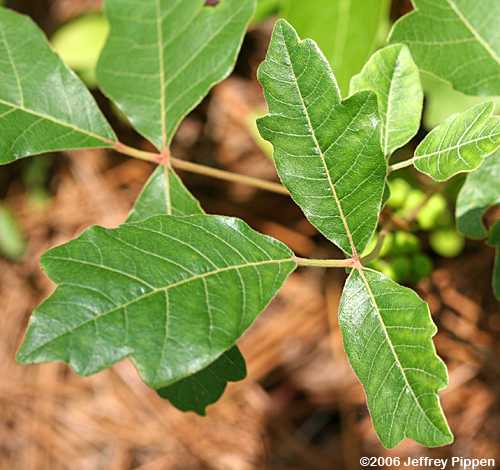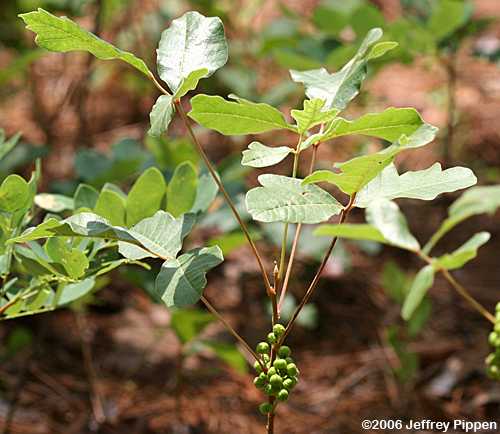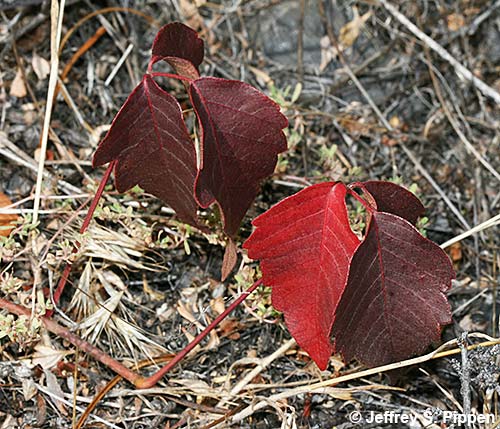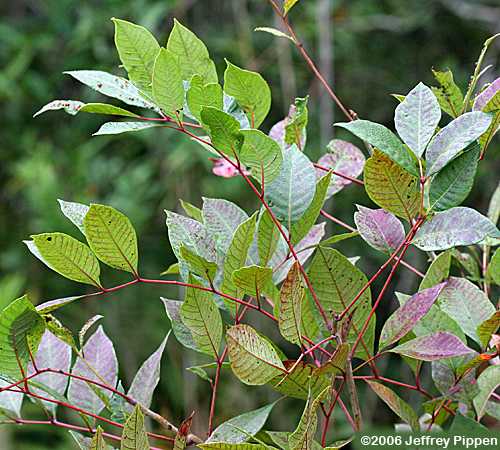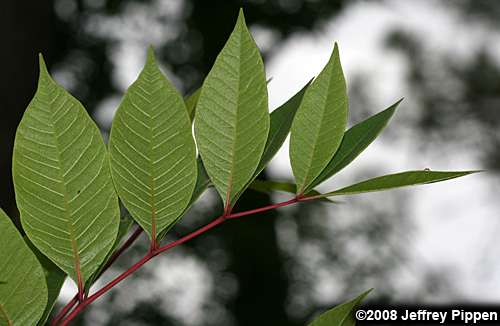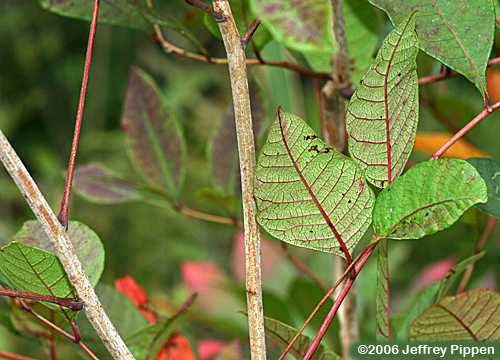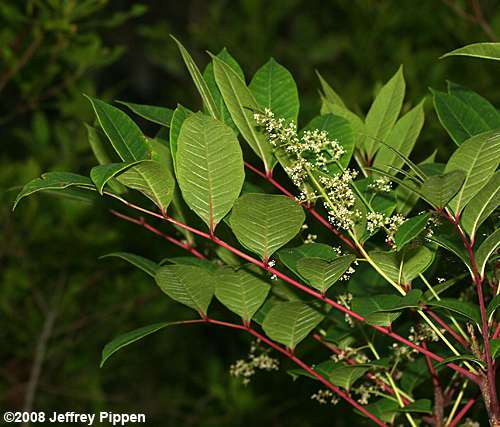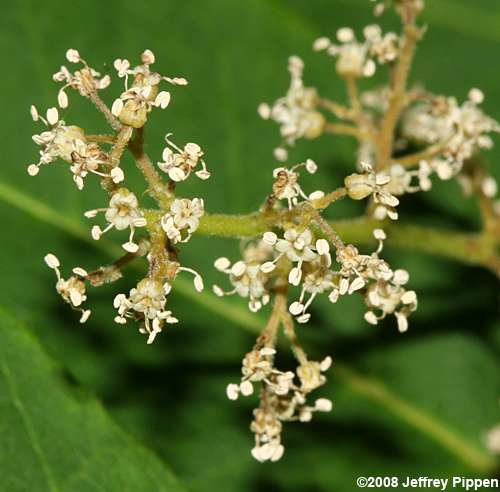Anacardiaceae > Toxicodendron
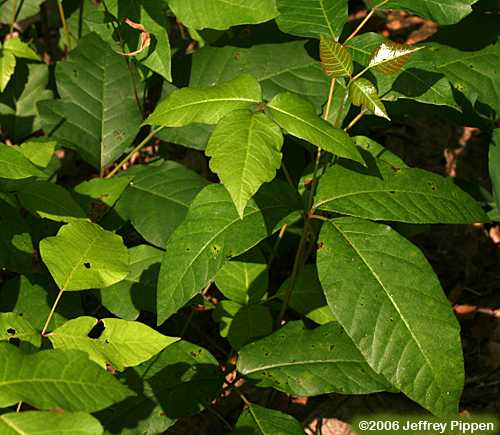
Caswell Co., NC
17 June 2006
"Leaves of three, let it be" is a common warning for poison ivy. Variable in appearance, leaflets may be lobed or unlobed, shiny or dull, light green or dark green!
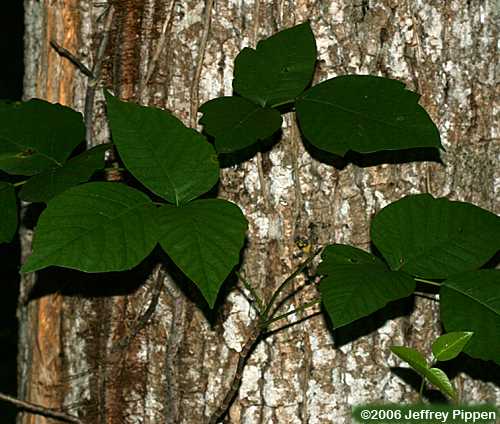
Caswell Co., NC
17 June 2006
All parts of the plant produce the chemical "urushiol", which produces a very itchy rash in many people. Poison Ivy grows along the ground as well as climbs up trees.
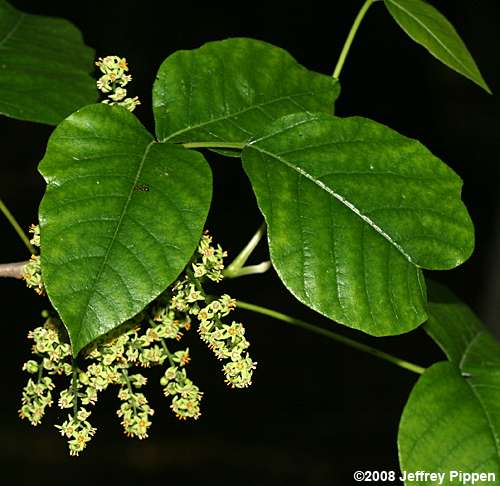
Orange Co., NC
15 May 2008
Clusters of pale flowers appear in the spring with fruits developing in the fall. The berries are devoured by birds, helping to disperse this plant widely.
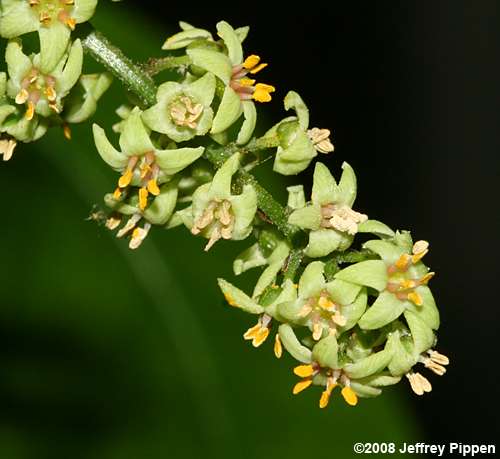
Orange Co., NC
15 May 2008
Flower detail.
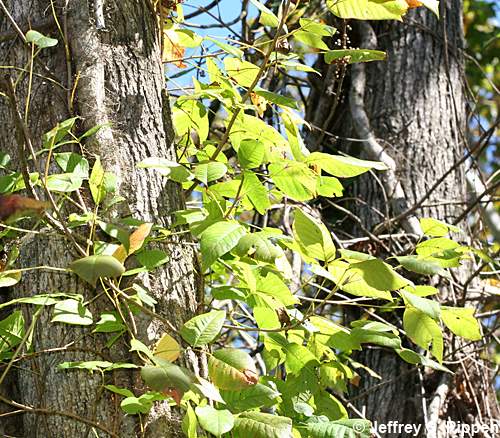
Durham Co., NC
15 Oct 2013
"Hairy" vines with branches and leaves along tree trunks are a common sight.
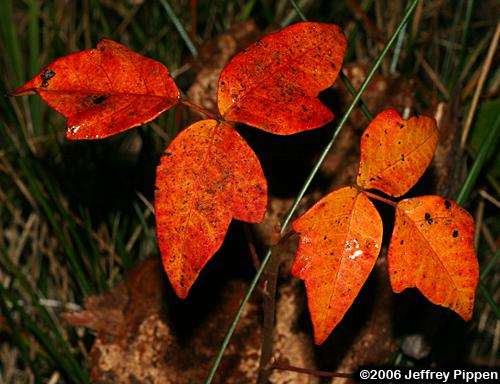
Dare Co., NC
11 Dec 2006
In the fall, Poison Ivy leaves turn bright colors as the leaf chlorophyll breaks down.
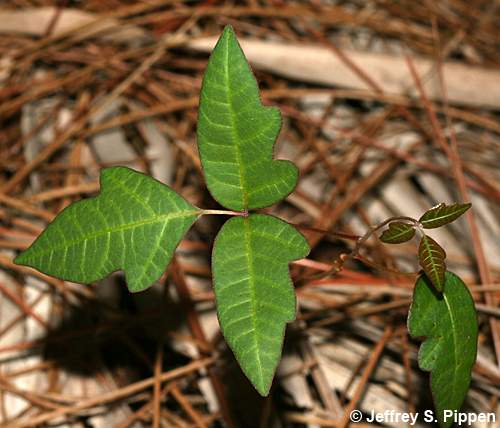
Slash Pine flatwoods, Collier Co., FL
24 Dec 2013
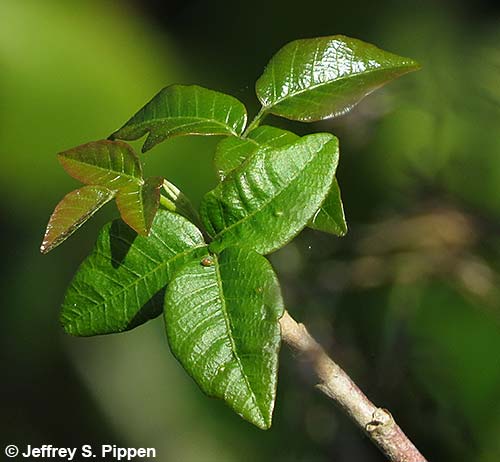
Ten Thousand Islands NWR, Collier Co., FL
4 Feb 2015
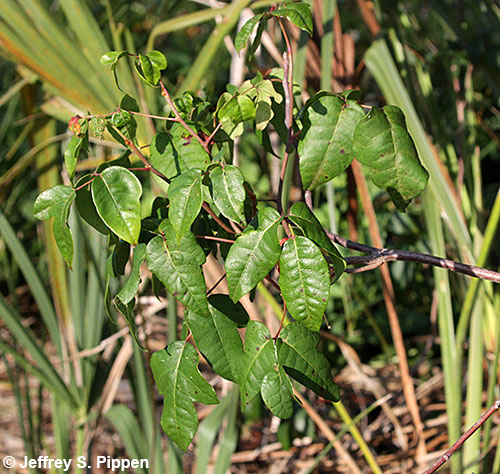
Ten Thousand Islands NWR, Collier Co., FL
15 May 2018
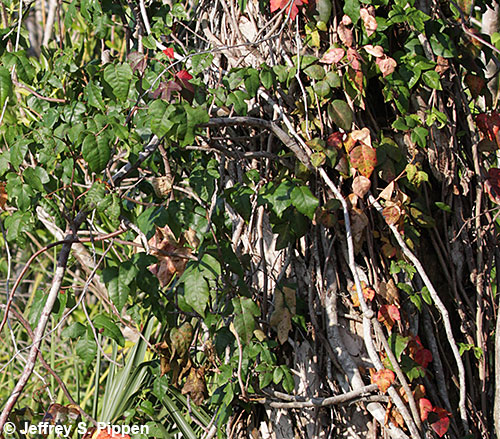
Ten Thousand Islands NWR, Collier Co., FL
15 May 2018
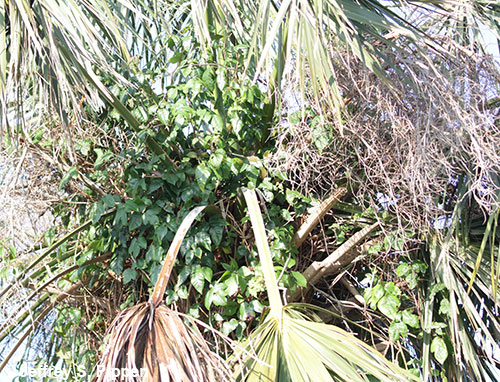
Ten Thousand Islands NWR, Collier Co., FL
15 May 2018
Poison Ivy in the crown of a palm tree
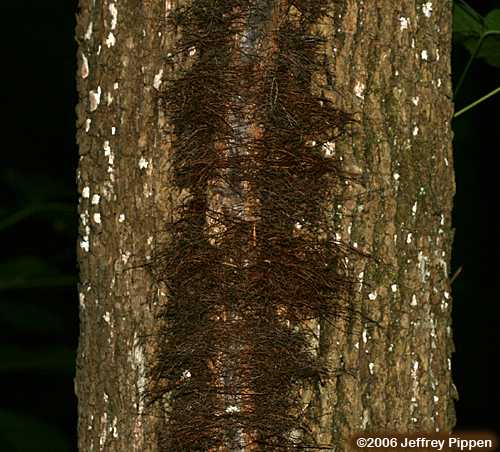
Caswell Co., NC
17 June 2006
Roots are covered with small rootlets, creating a hairy appearance.
Recent studies at Duke Free Air Carbon Dioxide Enrichment Research Site show that Poison Ivy produces significantly more growth under conditions of higher atmospheric carbon dioxide (CO2). Considering that CO2 is rising in the Earth's atmosphere faster than it ever has, that's just swell.
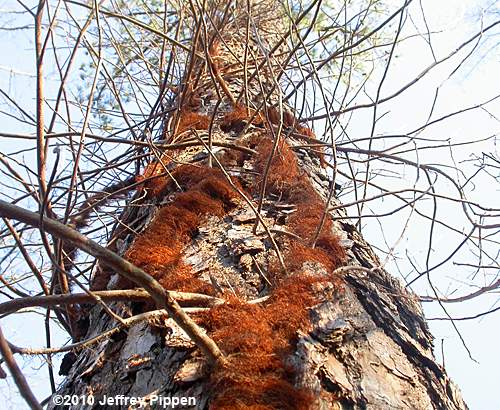
Orange Co., NC
14 Feb 2010
